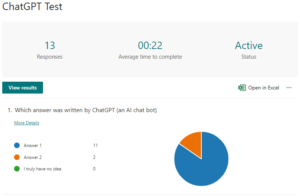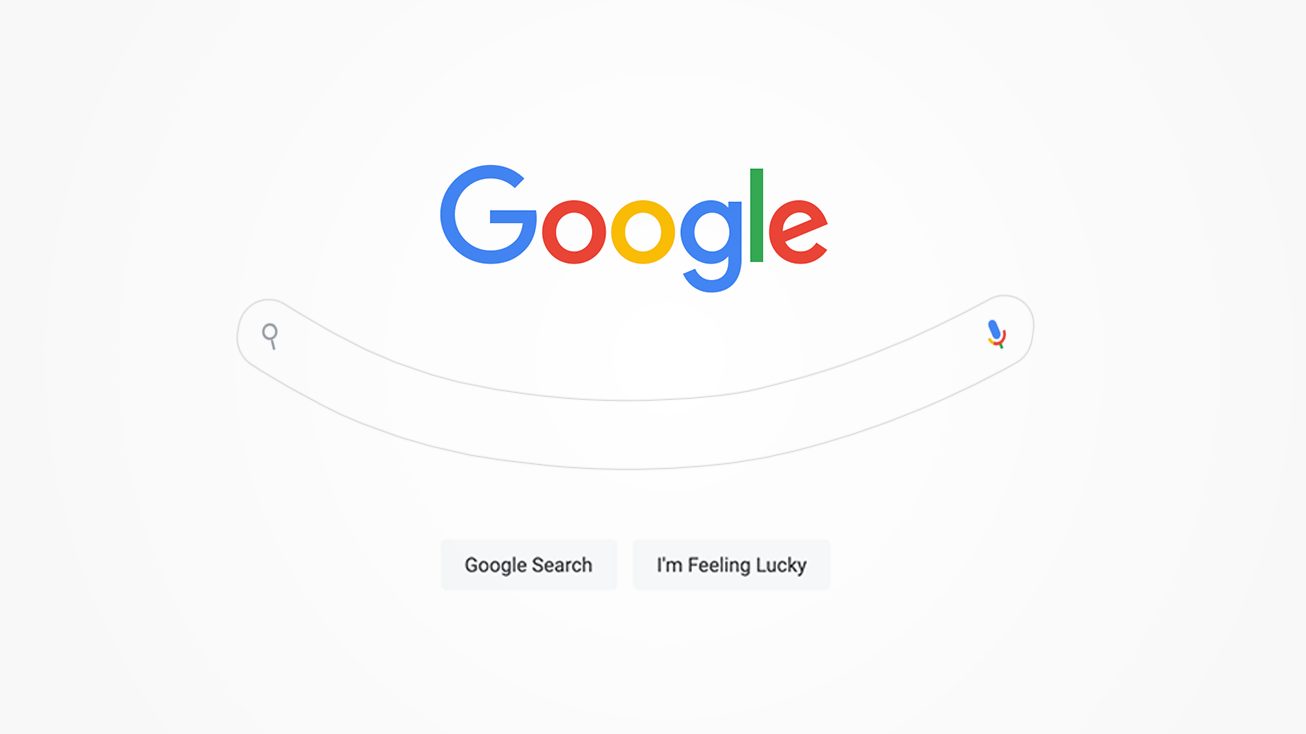If you’re even remotely close to content marketing these days, you’ve heard about ChatGPT.
This advanced chat bot comes locked and loaded with some pretty serious AI, and can spit out copy like… well, a machine.
This, as you may have guessed already, has set the content marketing world on fire with hot takes left and right:
ChatGPT can be a powerful tool for marketers.
ChatGPT is impressive, but it has some undeniable flaws.
And my personal favorite:
ChatGPT is bad, but it’s not worse than most human-written content.
At the end of the day, how and when you use AI like ChatGPT to create content is, frankly, your business. Like any tool in the toolbelt, it’s not going to be perfect every time.
Used properly, it could probably be a good thought starter for outlines, emails, social copy, etc.
But here’s one thing that’s undeniable about using ChatGPT for content marketing:
Everybody can tell.
But that doesn’t mean you shouldn’t be using ChatGPT for content creation at all. It just means that you can’t count on it to do all your thinking, writing, and planning for you. Here’s why.
As more marketers use AI for content, more clients can tell the difference.
Take a look through the jungle of effusive praise and wish-casting about ChatGPT and you’ll see a sprouting underbrush of discontent among clients feeling scammed by agencies and marketers using AI to deliver valuable content:
A content agency is very obviously using AI to write the content they’re producing for us (its borderline illegible) and charging us an insane amount of money for it and ALSO not allowing us to break our contract -what….would you do? LMAO
— Sara Pion (@sara_pion) January 25, 2023
It’s funny how everyone wants to use AI to write content but at the same time no one wants to read content written by AI.
— Andrea Bosoni (@theandreboso) January 18, 2023
Here’s the real scoop here: if you’re using AI to write tons of terrible content, your clients are going to notice. Your readers are going to notice. Your customers are going to notice.
Everybody knows!
What makes ChatGPT feel so un-human?
Simply put: ChatGPT’s seemingly endless quest to sound more and more like a human is the very thing that makes it so easy to distinguish from a real person.
Confused? It’s actually pretty simple.
Look at this prompt for ChatGPT to “tell me a joke about SEO”:

Clearly, there’s a disconnect here. While ChatGPT may be able to put together a joke based on everything it knows about the structure and timing of a joke, it misses the overall point of making something funny, surprising, or shocking.
Therein lies the underlying problem: the chess robot doesn’t know it’s playing chess.
The whole key to ChatGPT is that it’s highly advanced at imitating the way human beings write, but it fundamentally lacks the very human elements that make that possible. That, more than anything, sticks out immediately.
At the end of the day, all you’re left with is a machine that’s very good at writing like a human… so good, in fact, it’s impossible not to notice it’s not written by a human.
Uncanny valley, thy name is ChatGPT
Basically, the closer an AI comes to passing the Turing test, without actually demonstrating humanity, the more evident it becomes that the AI itself is only an imitation of the real thing.
Take these (horrifying) Steve Buscemi portraits made by AI, for example:
If you put in a celebrity name with nothing else you get an uncanny valley version. In this thread I will post pictures and you will guess the celebrity pic.twitter.com/JVon7ZMpd7
— ~sitbus-dapsup (@SDapsup) January 27, 2023
You know it’s Steve Buscemi, but you also know immediately that it’s cursed and wrong.
ChatGPT essentially accomplishes the same thing: it’s able to spit out copy that’s so close to feeling human, that its unhuman-ness becomes even more apparent as a result.
Putting ChatGPT to the (Digital Impulse) test
To really see how quickly a human can distinguish between AI-written content and human-written content, we put it to a vote here among our team at Digital Impulse.
We asked Roland Davin, our Director of Marketing Services, to draft up a quick paragraph about the following topic:
In one paragraph or less, when should a company opt to use ABM?
We took Roland’s hand-written answer, had ChatGPT spit out an answer to the same question, and put it to a vote among the team which was which.
Can you tell at first glance which is written by AI?
Answer #1
A company should opt to use account-based marketing (ABM) when they have a defined set of target accounts that are high-value and strategic for their business. ABM is a targeted approach to marketing and sales that focuses on specific, named accounts rather than broad segments or industries. It is typically used by B2B companies and is particularly effective for companies with a long sales cycle and high-value deals. With ABM, a company can:
-
- Build stronger relationships with key accounts.
- Increase revenue.
- Drive more efficient and effective marketing and sales efforts.
Answer #2
A company should opt to use account-based marketing if they have the following:
-
- A B2B business model.
- A respectful relationship between sales and marketing (marketing needs to trust that sales will provide attainable accounts and sales needs to trust marketing with sales enablement- i.e., marketing won’t screw up their deals).
- The ability to quickly create account-specific marketing content.
- Agreement between sales and marketing on an outlined strategy.
- The budget, resources, and tools to execute on the outlined strategy.
One “nice-to-have” is the ability to integrate an ABM platform with the sales team’s CRM to ensure both sales and marketing have real-time visibility into how accounts are engaging with ABM content. If sales can tell how ABM content is helping move their deals forward, they will continue to provide feedback to the marketing team to create new content and strategies, resulting in bigger deals and more revenue.
Here’s where our team’s responses netted out:

Not only did a majority of the team instantly recognize the ChatGPT content as less-than-human, it was by a factor of nearly 6 to 1.
So what does it all mean? Is there any way to use ChatGPT responsibly to create content without alienating clients with its un-humanness?
Here’s the takeaway: if ChatGPT can write it so easily, you should take it one step further.
The real answer to the “Should I be using ChatGPT to write content?” question is actually right there in front of us:
If your writing is the same as what ChatGPT can produce, write something better!
The inimitable Paul Graham said it best earlier this year:
Idea: Before writing an essay, have ChatGPT write one on the same topic to show you what would be the conventional thing to say, so you can avoid saying that.
— Paul Graham (@paulg) January 26, 2023
So what does that mean for marketers and content creators? Two big things:
1. First, write. Then, compare to AI.
Go ahead and write your best shot at an article. Then, when you’re done, try the same initial prompt in Chat GPT. If the answer the AI gives you looks too similar to your article, it’s probably time for a re-write.
Think about it: ChatGPT sources its content by crawling everyone else’s content on the web, then spitting out the best “average” of everything. If your original content looks suspiciously similar to the global average, you’re probably not going to stand out regardless of how you create your content.
2. Use ChatGPT sparingly, and never trust it completely.
Whether you’re turning to ChatGPT to write whole blog posts or simply to draft up a client email, keep in mind that it’s pretty easy for someone to spot AI-generated content from human-generated content.
That doesn’t mean it’s not useful—on the contrary, using AI like ChatGPT can be super useful to:
- Draft up simple emails
- Assemble content outlines
- Source new content ideas
But no matter how you’re pulling it in to your process, it’s a smart idea to always have a human review, edit, and tweak even small bits of copy before pushing it out into the world.
When the time comes to hit “publish,” you want confirmation that the content passes that all-important smell test from a real human.
We should know—our team of content creators and account managers see this every day, and we make it our business to make sure tools like ChatGPT are used as effectively as possible to not only check boxes, but also to stand out from all the other marketers using the same tricks.
If you’re looking for even more insight into how to best use ChatGPT for your processes, get in touch—we’d love to show you how to make the most of this not-quite-human writing tool.





